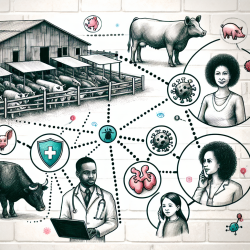Introduction
The COVID-19 pandemic presented unprecedented challenges to institutions worldwide, compelling them to rethink safety protocols and operational strategies. A comprehensive study titled The COVID-19 Pandemic Response: Biosafety Perspectives from a Large Research and Teaching Institution offers invaluable insights into effective pandemic response measures. This blog aims to translate these findings into actionable steps for practitioners, particularly those involved in online therapy services like TinyEYE, to enhance their skills and preparedness for future health crises.
Key Lessons from Arizona State University's Response
The research conducted by Arizona State University (ASU) highlights several key strategies that were instrumental in their effective pandemic response. These strategies can be adapted by practitioners in various fields, including online therapy, to ensure safety and continuity of services during public health emergencies.
- Proactive Communication and Collaboration: ASU's success was largely due to its proactive communication and collaboration with internal departments and external public health agencies. Practitioners should establish clear communication channels with colleagues, clients, and relevant authorities to disseminate timely information and updates.
- Data-Driven Decision Making: ASU relied on data to inform their decisions, such as testing and vaccination site designs. Practitioners should leverage data analytics to assess client needs and adapt therapy services accordingly, ensuring that interventions are evidence-based and effective.
- Resource Management: Efficient management of resources, including personal protective equipment (PPE) and testing supplies, was crucial for ASU. Practitioners should develop resource management plans to ensure the availability of necessary tools and technologies for uninterrupted service delivery.
- Training and Education: ASU emphasized the importance of training staff in new safety protocols. Practitioners should engage in continuous professional development to stay updated on best practices and enhance their skills in delivering remote therapy services.
Implementing Research Findings in Practice
Practitioners can implement the findings from ASU's research in several ways to improve their skills and service delivery during a pandemic:
- Develop Contingency Plans: Create detailed contingency plans that outline procedures for transitioning to remote services, managing client appointments, and ensuring data security during disruptions.
- Enhance Digital Literacy: Invest in training to improve digital literacy and proficiency in using teletherapy platforms, ensuring that practitioners can effectively engage with clients online.
- Focus on Mental Health: Recognize the impact of pandemics on mental health and incorporate strategies to support clients' emotional well-being, such as mindfulness exercises and stress management techniques.
- Foster a Culture of Safety: Encourage a culture of safety by regularly reviewing and updating safety protocols, conducting mock drills, and engaging in open discussions about safety concerns and solutions.
Encouraging Further Research
While the research by ASU provides a solid foundation for improving pandemic preparedness, it is essential for practitioners to continue exploring new strategies and innovations. Engaging in further research can help identify emerging trends, challenges, and opportunities in the field of online therapy and beyond.
To read the original research paper, please follow this link: The COVID-19 Pandemic Response: Biosafety Perspectives from a Large Research and Teaching Institution.










